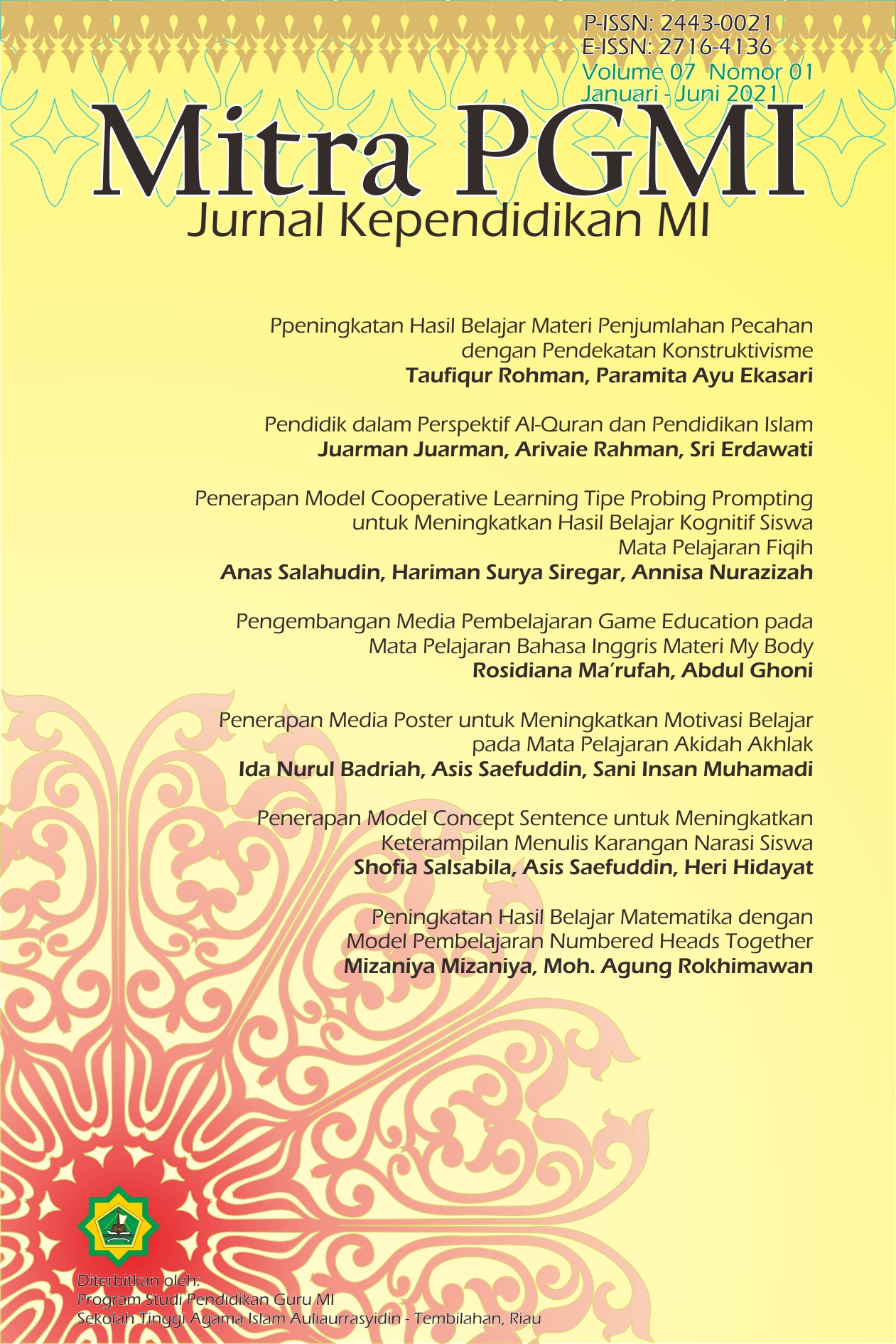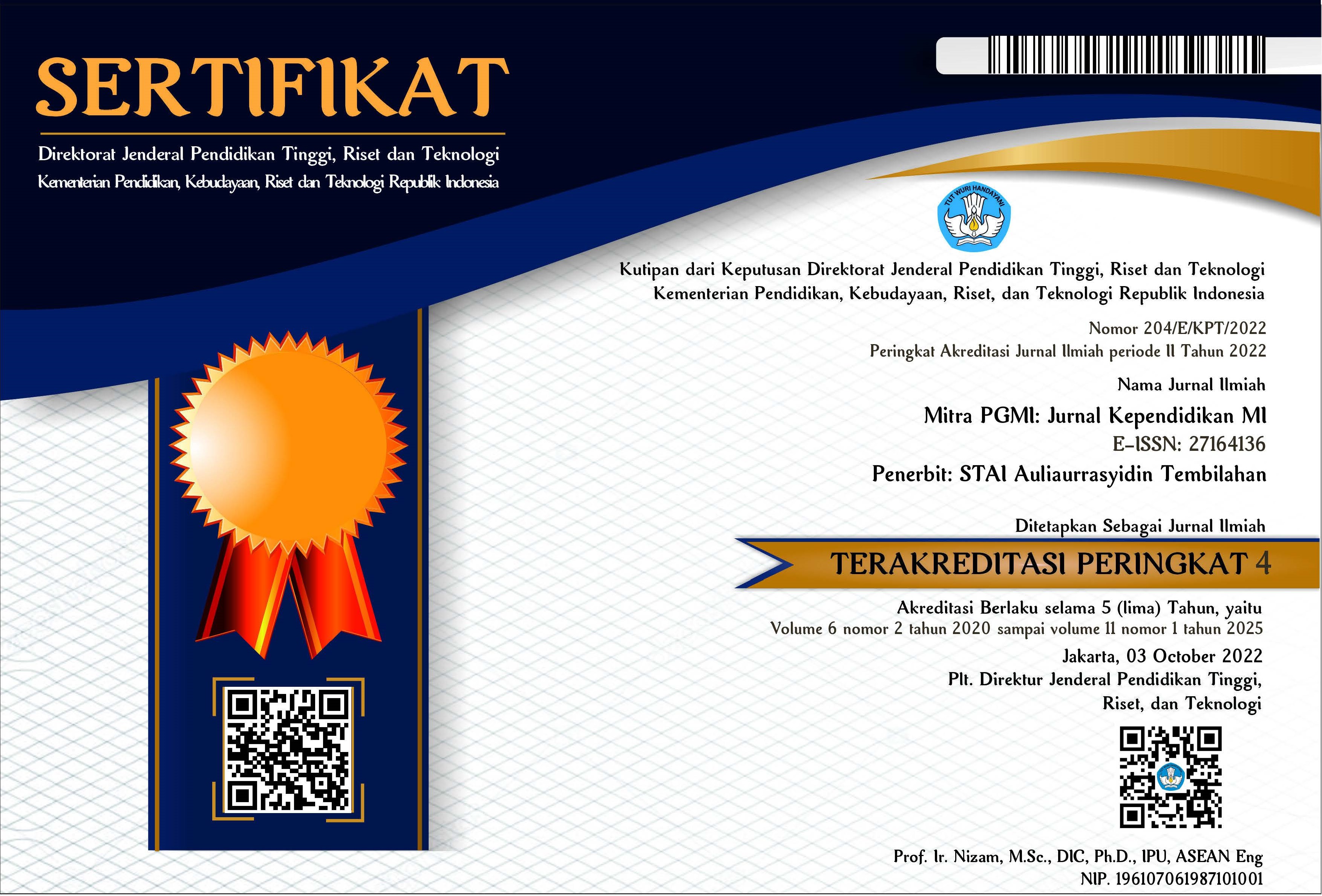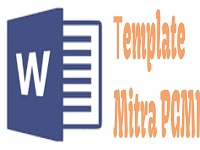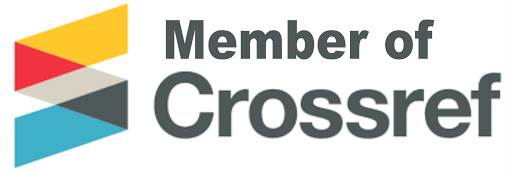Penerapan Model Cooperative Learning Tipe Probing Prompting untuk Meningkatkan Hasil Belajar Kognitif Siswa Mata Pelajaran Fiqih
DOI:
https://doi.org/10.46963/mpgmi.v7i1.164Keywords:
Probing Prompting, cognitive, learning outcomes, FiqhAbstract
Learning Fiqh in class IV MI Hayatul Islam Cileat was monotonous which affected to lower cognitive learning outcomes. The purpose of this study was to determine whether the Probing Prompting type of Cooperative Learning can improve students' learning outcomes. This research was Classroom Action Research. The results of the mean score before using Probing Prompting was 57.72. In the first cycle, the teacher's activity was 79.99% while the second cycle was 89.99%. The students' activities in cycle I 79.99%, cycle II 89.99%. Student cognitive learning outcomes after using the Cooperative Learning model type Probing Prompting Learning cycle I 70.34 cycle II 82.27. The accomplishment in Cycle I 54.54%, Cycle II 95.45%. The study concluded that the Cooperative Learning type Probing Prompting model could improve student cognitive learning outcomes in fiqh subjects.
Downloads
References
Aqib, Zainal. (2006). Penelitian Tindakan Kelas. Bandung: CV. Rama Widya.
Huda, Miftahul. (2014). Model-Model Pengajaran dan Pembelajaran. Yogyakarta: Pustaka Belajar.
Isjono. (2013). Cooperative Learning Efektifitas Pembelajaran Kelompok. Bandung: Alfabeta.
Lie, Anita. (2002). Cooperative Learning Mempraktikan Cooperative Learning di ruang-ruang kelas. Jakarta: Grasindo.
Salahudin, Anas. (2015). Penelitian Tindakan Kelas. Bandung: CV. Pustaka Setia.
Shoimin, Aris. (2014). 68 Model Pembelajaran Inovatif dalam Kurikulum 2013. Yogyakarta: Ar-Ruzz Media.
Undang-Undang Nomor 20 Tahun 2003 tentang Sistem Pendidikan Nasional.
Downloads
Published
Issue
Section
License
Copyright (c) 2021 Anas Salahudin, Hariman Surya Siregar, Annisa Nurazizah

This work is licensed under a Creative Commons Attribution-ShareAlike 4.0 International License.
Authors who publish with this journal agree to the following terms:
1. Copyright on any article is retained by the author(s).
2. The author grants the journal, right of first publication with the work simultaneously licensed under a Creative Commons Attribution shareAlike 4.0 International License that allows others to share the work with an acknowledgment of the work’s authorship and initial publication in this journal.
3. Authors are able to enter into separate, additional contractual arrangements for the non-exclusive distribution of the journal’s published version of the work (e.g., post it to an institutional repository or publish it in a book), with an acknowledgment of its initial publication in this journal.
4. Authors are permitted and encouraged to post their work online (e.g., in institutional repositories or on their website) prior to and during the submission process, as it can lead to productive exchanges, as well as earlier and greater citation of published work.
5. The article and any associated published material is distributed under the Creative Commons Attribution-ShareAlike 4.0 International License








2.png)


